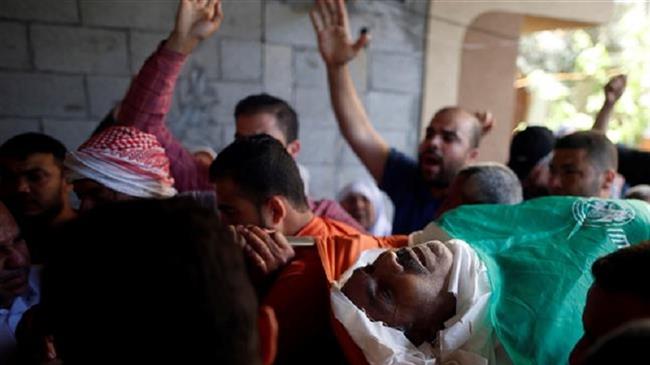
RNA - Robert Mardini, who heads the ICRC's Near and Middle East operations, told reporters in Geneva on Thursday that the recent demonstrations and a violent Israeli response along the Gaza fence "have triggered a health crisis of unprecedented magnitude."
Of the thousands wounded, some 1,350 people have complex injuries and will require between three and five surgeries each, Mardini said.
There is need for "a total of more than 4,000 surgeries, half of which will be carried out by ICRC teams," he said. “I think such a caseload would overwhelm any health system in the world," he added.
Mardini said the whole Gaza is "a sinking ship." He said while health workers are focused squarely on "saving lives and limbs," other health services, for instance during child birth or to respond to a heart attack, are suffering.
"This epic health crisis took place against the backdrop of multiple, protracted, chronic crises affecting all sectors of life in Gaza."
Mardini also stated that the ICRC would boost its assistance over a six-month period to reinforce medical facilities "which are clearly struggling to cope."
He said that in the seven weeks since the demonstrations began, "we have exceeded the wounded caseload of the August 2014 war."
The ICRC said on Thursday it was sending two surgical teams to Gaza and setting up a surgical unit in the enclave’s main hospital to treat heavy casualties from clashes between Israeli forces and Palestinians.
The humanitarian organization has appealed to donors for a $5.3-million budget extension to fund a new 50-bed surgical unit in the Al-Shifa Hospital, medical supplies and other additional assistance.
Senior ICRC officials have cautioned that it was far from a permanent fix for Gaza which has sky-high unemployment, limited supplies of electricity and clean water, and a sanitation system unable to cope.
UN envoy for the Middle East Nickolay Mladenov recently warned the council that the flare-up of the conflict between Palestinians and Israelis in the Gaza Strip may result in war.
Tensions have been running high along the Gaza fence since March 30, which marked the start of a series of protests, dubbed “The Great March of Return,” demanding the right to return for those driven out of their homeland.
The Gaza clashes reached their peak on May 14, the eve of the 70th anniversary of the Nakba Day (the Day of Catastrophe), which coincided this year with the US embassy relocation from Tel Aviv to the occupied Jerusalem al-Quds.
According to Press TV, at least 65 Palestinians were killed and more than 2,700 others wounded as the Israeli forces used snipers, airstrikes, tank fire and tear gas to target the Gaza demonstrators on May 14.
Overall, at least 122 Palestinians have been killed by Israeli fire in the unrest that flared up at the end of March.
According to the ICRC, more than 13,000 Palestinians have been wounded, including more than 3,600 by live ammunition - some multiple times - and there have been nearly 5,400 limb injuries.
Israel conducts regular air raids on Gaza under the pretext of hitting Hamas targets. The Gaza Strip has also been under an inhumane Israeli siege since 2007.
Tel Aviv has waged three wars on the coastal enclave since 2008, including the 2014 offensive, which left more than 2,200 Palestinians dead.
837/930